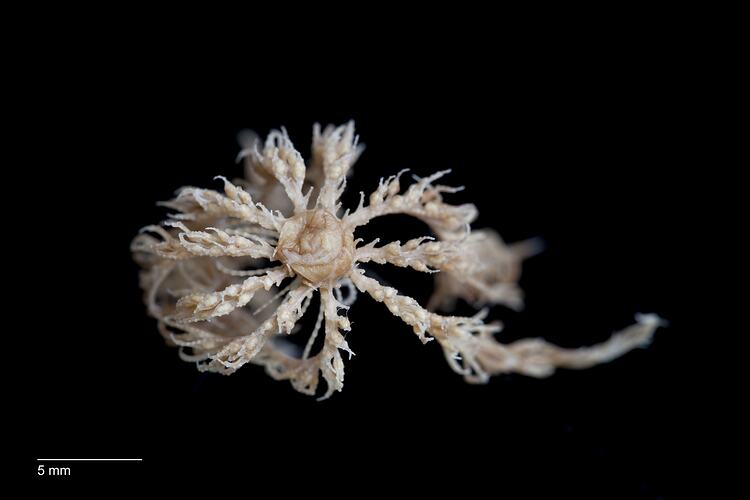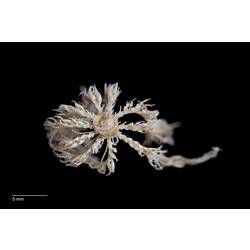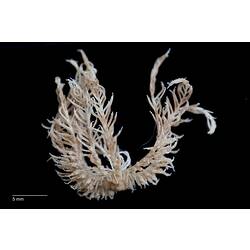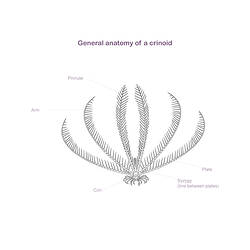General Description
Small crinoids with 10 arms. The mouth (the hole where the food grooves coalesce) is central on the disc and the anal cone is placed to one side. The gonads, which sit like fleshy lateral extensions to the pinnules (secondary branches) start on the third pinnule from the mouth. The first (oral) pinnule is short, consisting of only 6-10 segments. The second is two thirds as long as the first. The cirri are laterally flattened with elongated segments. Colour is light purple or brown, often variegated with white, sometimes with stripes along arms. Arm up to 5 cm long.
Biology
One of the smaller, more cryptic species of crinoids in southern Australia.
Distribution
South-eastern Australia.
Habitat
Rocky reefs and seagrass beds, to depth of 18 m.
More Information
-
Animal Type
-
Animal SubType
-
Brief Id
Ten arms, mouth central on disc, gonads start on third pinnule, first pinnule has 6-10 segments.
-
Maximum Size
5 cm
-
Habitats
-
Diet
Plankton or Particles
-
Endemicity
-
Commercial
No
-
Conservation Statuses
DSE Advisory List: Not listed, EPBC Act 1999: Not listed, IUCN Red List: Not listed
-
Depths
Shallow (1-30 m)
-
Water Column Locations
On or near seafloor
-
Taxon Name
-
Scientific Author
Bell, 1882
-
Common Name
Feather Star
-
Other Names
Crinoid
-
Phylum
-
Subphylum
-
Class
-
Subclass
-
Order
-
Family
-
Genus
-
Species Name
loveni





